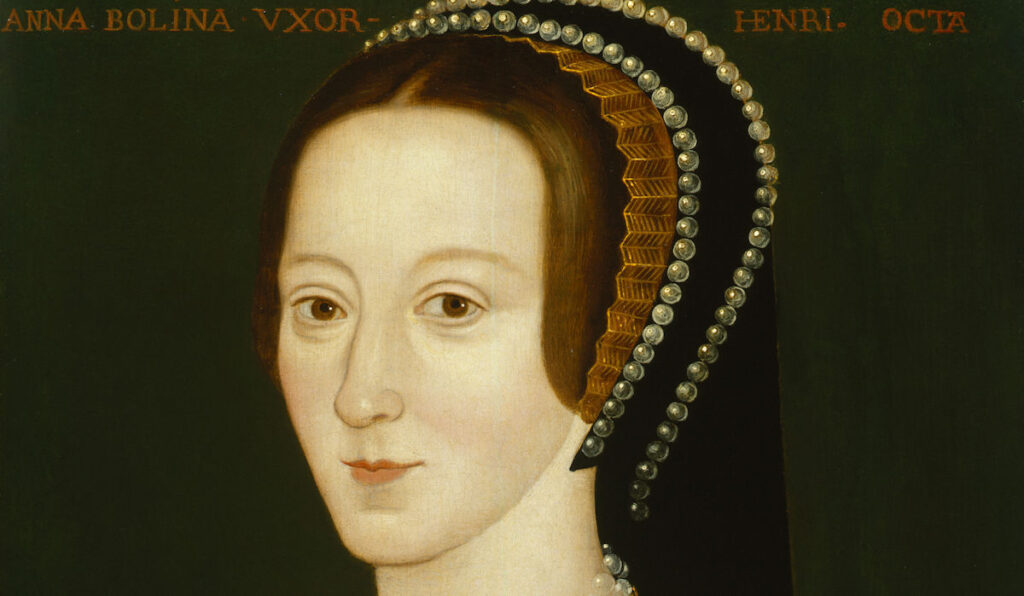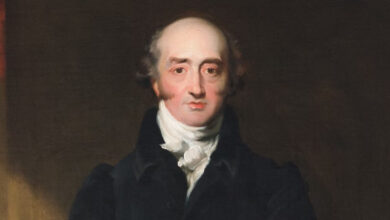
Podcast: Play in new window | Download
Subscribe: Spotify | Amazon Music | Youtube Music | RSS
“And thus I take my leave of this world and of you all, and I heartily desire you all to pray for me.” – Anne Boleyn
Anne Boleyn was a pivotal English historical figure with a legacy that far outweighs the fact that she was one of King Henry VIII’s six wives and one of two that he had executed, even though that is the main fact that many people know about her. For example, she is essentially the main reason why the Church of England was created, and she also gave birth to arguably one of England’s greatest monarchs. However, history has not been kind to her, and Anne Boleyn is still seen by many as an ambitious homewrecker who got her just desserts after marrying a ruthless, selfish tyrant.
Anne was born to the Earl of Wiltshire, Thomas Boleyn, and Lady Elizabeth Howard, but the exact date of her birth is in dispute. Some list it as early as 1499 and others as late as 1512, although the vast majority of historical documentarians believe her birth occurred somewhere between 1501 and 1507.
She grew up as a highly educated woman for the medieval era and received tutelage in both the Netherlands and most importantly, France where she was even a maid of honour to Claude, the queen consort to King Francis I.
Anne Boleyn possessed a sharp wit and a keen insight into the political maneuvering that went on in medieval times and upon returning from her tutelage overseas in 1522 she intended to marry her cousin James Butler, the 9th Earl of Ormond. However, for reasons that are not entirely clear, the marriage was called off, which Anne was none too happy about. She didn’t rest on her laurels though, and instead of sitting still and licking her wounds, Anne began instead to manoeuvre herself into the court and managed to get herself a posting as one of the maids of honour for King Henry’s then-wife Queen Catherine of Aragon.
From this position, Anne Boleyn pounced on the fact that Catherine was unable to produce a male heir for the King, having so far only provided him with a daughter and began to plot her ascent to the throne. She started by spreading rumours, that she knew would eventually arrive at the ear of the king, about Catherine’s inability to produce boys and that he would be better off marrying her instead because she was more likely to be able to bear him a son.
Anne Boleyn’s plot was successful, and the king began his pursuit of her in early 1526. Initially, Anne resisted these attempts, until the king promised to annul his marriage to the queen and marry her instead. The king petitioned Pope Clement VII to annul his marriage to Catherine of Aragon, but the church refused to do so, not only on political grounds but also because ecclesiastical law forbade it. Consequently, England started to distance itself from the Catholic Church and began limiting its power in the country. King Henry VIII and Anne Boleyn were secretly married on 14 November 1532 which was followed by a formal marriage ceremony on 25 January the following year. The king’s marriage to Catherine of Aragon was annulled by the new Archbishop of Canterbury, Thomas Cranmer on 23 May. This was an act that could not be forgiven by the Pope who began ex-communication proceeding against Henry and Thomas Cranmer with the king deciding to seize control of the Church of England, placing himself at its head. On 1 June 1533, Anne Boleyn was crowned Queen of England.
This, of course, was fine if Anne could follow through with her promise of a male heir for the king, otherwise, it was a potentially dangerous path to take. She was a beautiful woman and would be able to keep the king entertained for a while but her feminine charms were not going to last forever. She did give birth to a daughter, the future Queen Elizabeth I on 7 September 1533, who would go on to become one of England’s greatest monarchs, but it wasn’t long before the honeymoon period began to wear off and following three miscarriages, and no male heir in sight, Henry started to turn his attentions elsewhere and began courting Jane Seymour. Anne Boleyn was now starting to become more of a liability than an asset as she stood in the way of marriage to Jane.
In April 1536, the king had Anne brought up on charges of incest, infidelity and high treason. She was arrested on 2 May and sent to the Tower of London where a trial was held. The jury of her peers included not only Henry Percy, the man she was once supposed to marry but also her uncle, Thomas Howard. She was found guilty on 15 May and was sentenced to death. Anne Boleyn was beheaded by a French swordsman on 19 May 1536.
There was almost certainly no truth to any of the outrageous assertions concerning Anne and surviving historical documents even show that several of the charges are demonstrably false due to her inability to have committed them since she was reported as having been in other places at the times stated.
The legacy of Anne Boleyn is multifaceted; as, on the one hand, her subversion of the rightful queen, the seduction of the king and the subsequent ruining of the royal marriage which helped lead to years of war with Spain, plus the hand she had in helping to undermine the power of the papacy in England all made Anne Boleyn one of the great focal points of medieval and Renaissance gossip.
On the other hand, Anne Boleyn’s legacy also features a positive aspect, at least as far as the future of England was concerned and that is that she was the mother of Queen Elizabeth I who would become one of the greatest monarchs in England’s history. When Elizabeth was crowned queen in 1558, Anne suddenly became a heroine of the English Reformation and many still argue that she was the most important queen consort that England ever had.
Podcast: Play in new window | Download
Subscribe: Spotify | Amazon Music | Youtube Music | RSS




